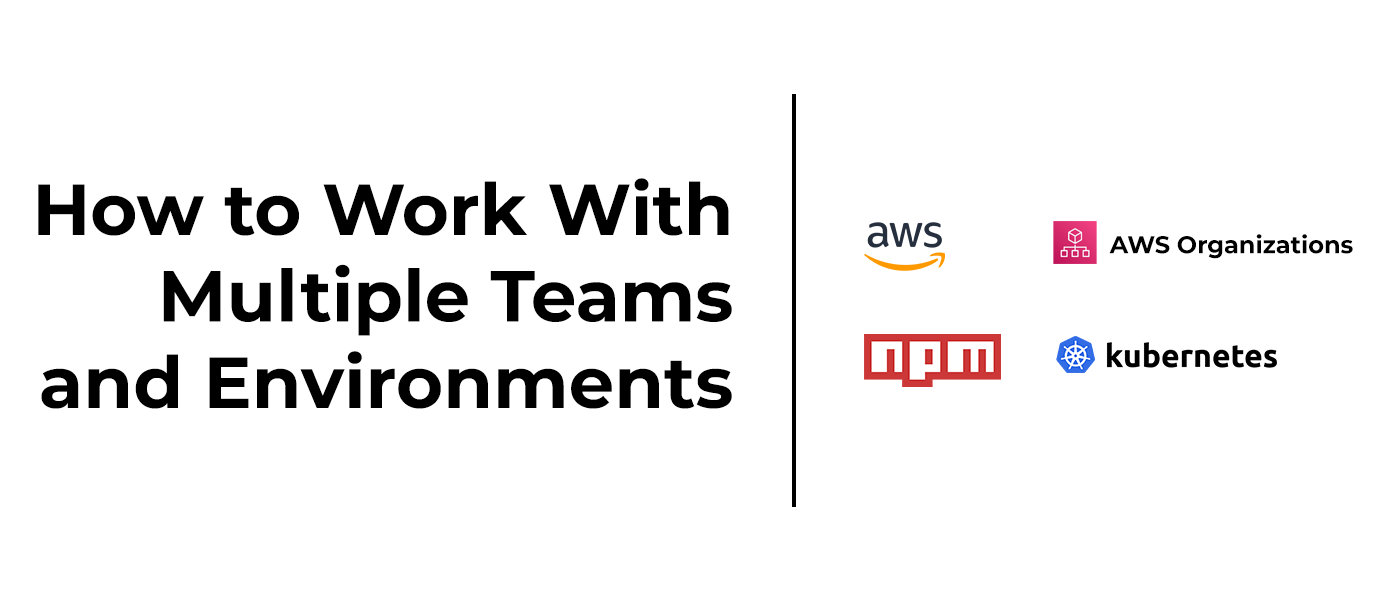Chapter 6: How to Work with Multiple Teams and Environments
Chapter overview
Learning resources
Tools
- Configuration Language Tools (3)
- Configuration Data Store Tools (3)
- AWS Account Clean Up Tools (2)
- Automatic Update Tools (4)

Learn how to deal with problems of scale by breaking up your deployments into multiple environments and breaking up your codebase into multiple libraries and services.
By Susan J. Fowler (O'Reilly)
One of the biggest challenges for organizations that have adopted microservice architecture is the lack of architectural, operational, and organizational standardization. After splitting a monolithic application or building a microservice ecosystem from scratch, many engineers are left wondering what s next. In this practical book, author Susan Fowler presents a set of microservice standards in depth, drawing from her experience standardizing over a thousand microservices at Uber. You ll learn how to design microservices that are stable, reliable, scalable, fault tolerant, performant, monitored, documented, and prepared for any catastrophe.
By Matthew Skelton and Manuel Pais (IT Revolution Press)
Effective software teams are essential for any organization to deliver value continuously and sustainably. But how do you build the best team organization for your specific goals, culture, and needs? Team Topologies is a practical, step-by-step, adaptive model for organizational design and team interaction based on four fundamental team types and three team interaction patterns. It is a model that treats teams as the fundamental means of delivery, where team structures and communication pathways are able to evolve with technological and organizational maturity. In Team Topologies, IT consultants Matthew Skelton and Manuel Pais share secrets of successful team patterns and interactions to help readers choose and evolve the right team patterns for their organization, making sure to keep the software healthy and optimize value streams. Team Topologies is a major step forward in organizational design for software, presenting a well-defined way for teams to interact and interrelate that helps make the resulting software architecture clearer and more sustainable, turning inter-team problems into valuable signals for the self-steering organization.
By Morgan Bruce and Paulo A. Pereira (Manning)
Microservices in Action teaches you how to write and maintain microservice-based applications. Created with day-to-day development in mind, this informative guide immerses you in real-world use cases from design to deployment. You'll discover how microservices enable an efficient continuous delivery pipeline, and explore examples using Kubernetes, Docker, and Google Container Engine.
By Chris Richardson (Manning)
The monolithic architecture works well for small, simple applications. However, successful applications have a habit of growing. Eventually the development team ends up in what is known as monolithic hell. All aspects of software development and deployment become painfully slow. The solution is to adopt the microservice architecture, which structures an application as a services, organized around business capabilities. This architecture accelerates software development and enables continuous delivery and deployment of complex software applications. Microservice Patterns teaches enterprise developers and architects how to build applications with the microservice architecture. Rather than simply advocating for the use the microservice architecture, this clearly-written guide takes a balanced, pragmatic approach. You'll discover that the microservice architecture is not a silver bullet and has both benefits and drawbacks. Along the way, you'll learn a pattern language that will enable you to solve the issues that arise when using the microservice architecture. This book also teaches you how to refactor a monolithic application to a microservice architecture.
By Sam Newman (O'Reilly)
Distributed systems have become more fine-grained in the past 10 years, shifting from code-heavy monolithic applications to smaller, self-contained microservices. But developing these systems brings its own set of headaches. With lots of examples and practical advice, this book takes a holistic view of the topics that system architects and administrators must consider when building, managing, and evolving microservice architectures. Microservice technologies are moving quickly. Author Sam Newman provides you with a firm grounding in the concepts while diving into current solutions for modeling, integrating, testing, deploying, and monitoring your own autonomous services. You'll follow a fictional company throughout the book to learn how building a microservice architecture affects a single domain.
By Yevgeniy Brikman (Blog post)
Fast, secure, reliable AWS environments using Terraform/OpenTofu.
By James Lewis and Martin Fowler (Blog post)
Defining the microservices architectural style by describing their nine common characteristics.
Consul is a service networking solution to automate network configurations, discover services, and enable secure connectivity across any cloud or runtime.
etcd is a strongly consistent, distributed key-value store that provides a reliable way to store data that needs to be accessed by a distributed system or cluster of machines. It gracefully handles leader elections during network partitions and can tolerate machine failure, even in the leader node.
ZooKeeper is a centralized service for maintaining configuration information, naming, providing distributed synchronization, and providing group services. All of these kinds of services are used in some form or another by distributed applications. Each time they are implemented there is a lot of work that goes into fixing the bugs and race conditions that are inevitable. Because of the difficulty of implementing these kinds of services, applications initially usually skimp on them, which make them brittle in the presence of change and difficult to manage. Even when done correctly, different implementations of these services lead to management complexity when the applications are deployed.
Use AWS Resource Explorer to more easily search for and discover your resources across AWS and navigate directly to act on them.
A tool for cleaning up your cloud accounts by nuking (deleting) all resources within it.
You can use Dependabot to alert you when your repository is using a software dependency with a known vulnerability.
Mend Renovate products help developers automate dependency updates by detecting newer package versions and providing updates directly to the application code.
Enable developers to build securely from the start while giving security teams complete visibility and comprehensive controls.